Exploring The Wines Of Argentina: Malbec and Torrontés
Argentina is known for its rich culture, stunning landscapes, and delicious wines. Among Argentina's many types of wine, Malbec and Torrontés are the most famous. Argentina is renowned for its exceptional wine, with a wide variety of
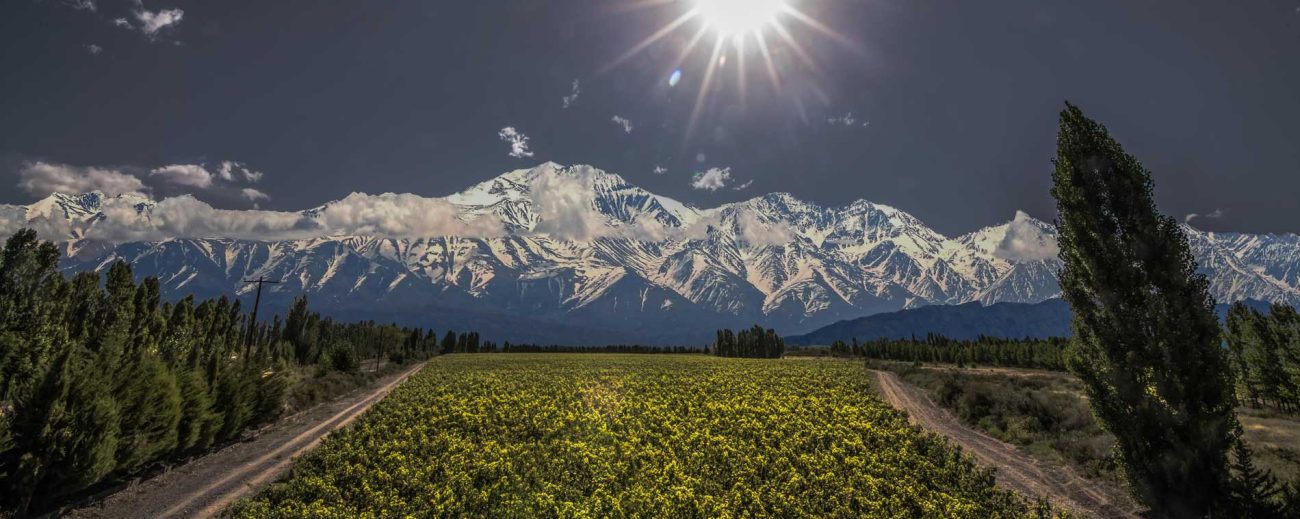
Argentina is known for its rich culture, stunning landscapes, and delicious wines.
Among Argentina’s many types of wine, Malbec and Torrontés are the most famous.
Argentina is renowned for its exceptional wine, with a wide variety of grape varietals grown across its diverse regions.
In this article, we will delve deeper into the world of Malbec and Torrontés, exploring their history, production, and what makes them so special.
The history of wine production in Argentina
Argentina has a rich history of winemaking that dates back over 400 years. The introduction of vineyards to the country can be traced back to the arrival of Spanish colonizers in the 16th century. Since then, Argentina’s wine industry has flourished, becoming a significant global player.
One of the reasons for Argentina’s success in the wine industry is its ideal climate and geography. The country’s vast and diverse landscape provides different growing conditions for a wide range of grape varieties. Argentina’s vineyards are located in various regions across the country, each with its own unique microclimate and soil composition.
The most notable Argentinian wine regions are
1) Mendoza
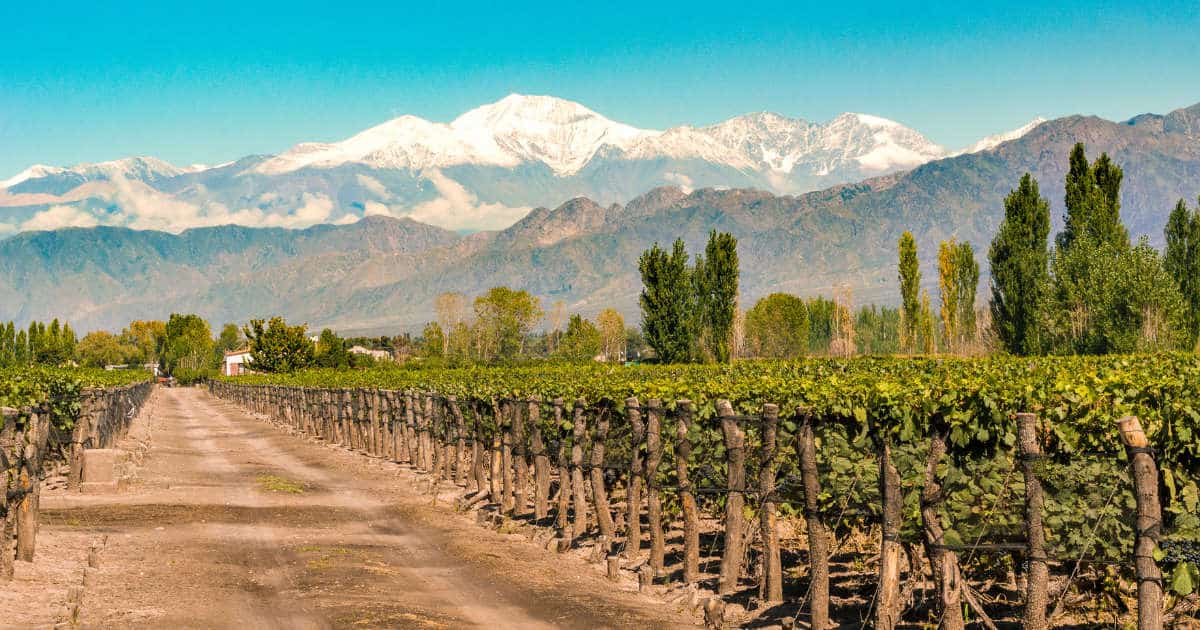
Mendoza wine region
Nestled at the foot of the Andes mountain range in central west Argentina, Mendoza boasts the country’s largest concentration of vineyards and wineries, with 76% of the total vineyards in Argentina. The Andes, which act as a barrier to the humid winds of the Pacific, combined with Mendoza’s distance from the Atlantic Ocean, shape the climate and create perfect conditions for growing vines.
Malbec is Mendoza’s signature grape variety, accounting for 20% of the total area of Malbec planted in the country. The Lujan de Cuyo and Uco Valley sub-regions offer some of Argentina’s highest-rated Malbecs, Torrontés, Cabernet Sauvignons, and Merlots. The best time to visit Mendoza for warm temperatures is between November and February.
Predominant varieties:
- Bonarda,
- Cabernet Sauvignon,
- Cereza,
- Criolla Grande,
- Malbec.
2) Catamarca
Located in northwest Argentina, Salts has diverse landscapes ranging from lush rainforests and temperate valleys to Andean deserts and is home to some of the world’s highest and most spectacular vineyards.
The most important wine region in the province is Cafayate, where wines are produced at some of the highest vineyards in the world, 1,700 meters above sea level. In addition to Cafayate, wine tours of Salta should include stops at San Carlos, Cachi, and Molinos. The Calchaquí Valleys GI, a system of interconnecting valleys stretching 270 km, is where the viticultural business is located and is shared with the provinces of Catamarca and Tucumán. The viticulture of Salta is strongly influenced by high-altitude vineyards, with cultivated areas starting at 5,020 fasl and reaching 10,207 fasl in Payogasta, in the department of Cachi.
Cafayate Valley, in the southwest of the province, is the center of reference for the viticulture of the North and is characterized by a hot climate and cool nights, a wide thermal amplitude, and long summers. Sandy, deep soils favor the valley and produce wines with aromas and flavors with intense, mature tannins. Red varieties, especially Malbec, have seen significant growth in the province, and Cabernet Sauvignon and Tannat are among the most emblematic red wines, with delicate tannins and structure. Torrontés Riojano is considered the finest expression of Salta among the whites.
The best time to visit is between April to June and August to November to enjoy the best weather conditions.
Predominant varieties
4) Rio Negro
Patagonia is renowned for its rugged and vast landscape, attracting adventure enthusiasts yearly. However, there is more to a trip to Patagonia than just mountains, ice, penguins, and snow. Tucked away amidst this awe-inspiring scenery lies the lush Rio Negro valley, an emerging wine region in Argentina.
The valley is named after the 121 km long and 8 km wide Rio Negro River, which runs between the Andes mountain range and the Atlantic Ocean. The region is gaining a reputation for producing exceptional Malbec and Cabernet Sauvignon varietals.
The Rio Negro vineyards are located in a series of valleys within the basin of the Colorado and Negro rivers. These rivers cross the province from west to east, with the vineyards ranging from 1,214 ft in the high valleys to 13 ft at the coast. The low altitude of the area combines with a greater latitude, which helps balance the temperature. In the west, the climate is mostly dry and continental, with low rainfall and relative humidity. Winters are cold, and summers are warm and dry, giving the region a unique luminosity and great thermal amplitude. The winds blowing from the Austral mountain range increase the dryness of the environment, making the vineyards very healthy.
The wines from Rio Negro Valley stand out for their excellent balance between alcohol and acidity, thanks to the slow maturation of the grapes. If you plan to visit Patagonia and Rio Negro, the best time is between October and April.
Predominant varieties
5) San Juan
Argentina’s San Juan province, located in the central-west region, is the country’s second-most important wine province after Mendoza. Sanjuanina viticulture is spread over several valleys or Geographic Indications, including Pedernal, Calingasta, Zonda, Ullum, Iglesia, and Jáchal.
The warm, dry climate of San Juan has a significant impact on the quality of the wine. High solar exposure, low rainfall, and climatic phenomena contribute to the characteristic differential quality of the region’s wines. The soils in San Juan are typically diverse but mainly alluvial with sand and clay.
Syrah has emerged as the signature grape of the province, with Malbec also playing an important role, offering some fascinating differences from other wine regions in the country. White varieties such as Torrontés, Pedro Giménez, and Moscatel de Alejandría, as well as Criolla grapes, are popular.
The whites produced in San Juan typically have medium color intensity with green hues, strong fruity aromas, and moderate acidity and structure. The reds have violet hues, and at higher altitudes, the wines have deeper colors and more intense aromas.
Predominant varieties
- Bonarda,
- Malbec,
- Pedro Gimenez,
- Syrah,
- Torrontés.
6) La Rioja
The Famatina Valleys GI is a breathtaking region between the Sierras de Velasco and Famatina in the western territory. It has fertile oases and arid mountain ranges that have helped create a cultivated surface with a unique climate and topography.
The valleys have a hot climate, mild nights, and severe droughts, making it semi-arid. The combination of altitude, latitude, and solar exposure leads to differential temperatures and humid conditions that make it ideal for wine production.
One of the primary grape varieties grown in this region is Torrontés Riojano, a native grape that belongs to the family of Criollas grapes. The white wines produced in this region have green hues with intense fruity aromas. The palate’s structure is medium, while the acidity is moderate to low. In addition to Torrontés Riojano, the Famatina Valleys GI also produces excellent red wines. These red wines are known for their robust and complex flavors, making them highly sought after by wine enthusiasts.
The Famatina Valleys GI is an excellent destination for wine lovers who want to explore Argentine wines’ unique flavors and aromas. With its breathtaking landscape, rich culture, and unique climate, this region is undoubtedly one of the best places to experience the beauty and diversity of Argentine wine.
Predominant varieties
7) Neuquén
Neuquén, an Argentine province, is home to a thriving viticulture industry. The vineyards are mainly concentrated in the southeast region, situated in the basins of the Limay and Neuquén rivers. San Patricio del Chañar, a city in the province, emerged as a viticultural center in the late 1990s, contributing to the diversification of the wines produced in the area.
Despite being located at low altitudes, ranging from 886 to 1,362 feet, the region experiences a drop in temperature due to its latitude. The climate in Neuquén is hot, with very cold nights, severe droughts, high solar exposure, and constant winds.
The wines produced in Neuquén are renowned for their remarkable concentration of color in all varieties, high levels of fruit in the aromas, excellent body, and structure. In recent years, the province has seen a surge in wine tourism, with visitors flocking to the vineyards to experience the winemaking process firsthand. The region’s picturesque landscapes and idyllic weather conditions make it a popular destination for tourists looking to escape the city’s hustle and bustle.
In conclusion, Neuquén’s viticulture industry has grown significantly in recent years, producing high-quality wines that are gaining recognition worldwide. The region’s unique weather conditions and diverse grape varieties have made it a hub for wine enthusiasts and tourists. If you’re looking to explore Argentina’s wine country, Neuquén should be at the top of your list.
Predominant varieties
Malbec
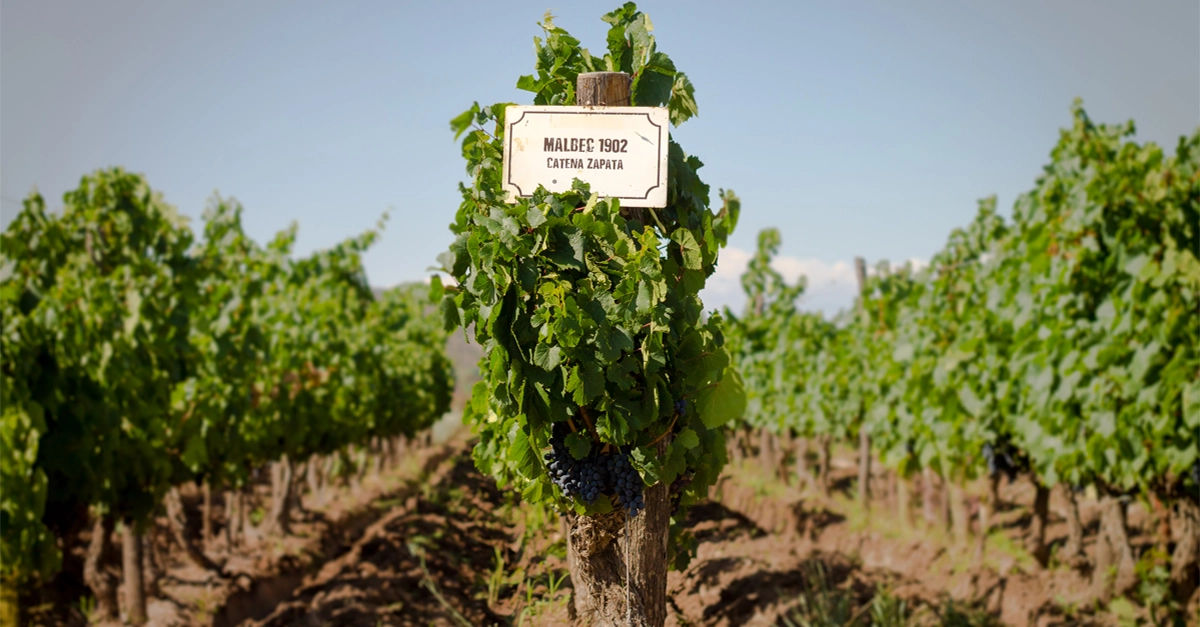
Photo credit: Bodega Catena Zapata Malbec vineyard
Malbec has become Argentina’s flagship wine, with over 70% of the world’s Malbec production coming from the Mendoza region. The region’s high altitude and arid climate are ideal for growing Malbec grapes, which thrive in the hot, dry summers and cool nights.
Uncover some of the characteristics concerning the Malbec grape variety.
What is Malbec wine?
Malbec is a red grape variety that has found a new home and gained worldwide recognition in Argentina. It has become one of the most popular grape varieties in the country, with Argentine Malbec wines now acclaimed for their quality and character. Through innovative winemaking techniques and the region’s unique terroir, Argentina has created a distinctive style of Malbec that has captured the hearts of wine lovers worldwide.
Where does Malbec come from?
Malbec is most commonly associated with Argentina, but its roots go back to the southwestern French region of Cahors, where Malbec is also known as Côt.
What does Malbec taste like?
Malbec wine is renowned for its complex and rich flavor profile, making it a favorite among wine lovers worldwide. A Malbec wine is powerful, purple-black in color, with a fruity-spicy note and a full taste. The bouquet is characterized by spice, paired with hints of blueberry, laurel, juniper, cherry, and dark chocolate, which makes it a perfect accompaniment to hearty meals such as red meat, game, and spicy cuisine. If aged in new oak, it can also showcase hints of vanilla, chocolate, and coffee, adding an extra layer of depth and complexity to the wine.
The tannic structure of Malbec varies depending on where it’s grown and the character of the vintage, ranging from medium to more assertive. However, it often has enough acidity to keep things lively. Every sip of Malbec wine conveys a sense of plushness that is difficult to resist. In some cases, hints of violets may also be discernible, adding a floral element to its already complex flavor profile.
To fully experience the rich flavor of Malbec wine, it is best enjoyed at a slightly cooler temperature than room temperature. Additionally, the wine glass should allow for vigorous swirling and generous oxygenation, which helps it to open up and reveal its full flavor potential.
What food to pair with Malbec?
Malbec is a popular choice of wine to accompany an Argentinean asado (grill), which usually involves an abundance of meat and calls for several bottles of the robust red. However, Malbec’s versatility extends beyond heavy meats as it boasts a unique ability to express a variety of flavors and pairs well with a range of foods, including mushrooms, cheeses from mild to assertive such as gouda and gorgonzola, braised dishes, lamb, rich stews and even a pepperoni pizza.
Overall, Malbec is a versatile and enjoyable wine that can be paired with a wide range of foods or enjoyed independently. Proper serving and pairing techniques can enhance the overall experience of enjoying this wonderful wine.
What are notable producers of Malbec wines?
1) Catena Zapata
Bodega Catena Zapata, founded in 1902, is synonymous with Argentine wine. Over the years, the winery has become one of the country’s most important producers of Malbec.
At Catena Zapata, great wines begin in the vineyard. One of the most significant contributions made by Catena Zapata to Argentine wine is the resurrection of the Malbec grape. Malbec was considered a minor grape variety for many years, often used for blending purposes. However, the winery recognized its potential and invested in research and development to produce high-quality wines from this grape.
Another pioneering effort by Catena Zapata was the discovery of extreme high-altitude terroirs in the Andean foothills of Mendoza. The family’s Adrianna Vineyard, located at almost 5,000 feet elevation, has been called the Grand Cru of South America. The unique conditions of this vineyard, with its rocky soils, cool temperatures, and low humidity, produce wines of exceptional depth and complexity.
The story of Catena Zapata is the story of Argentine wine. Their dedication to quality, innovation, and a deep understanding of their terroir has put them at the forefront of the industry.
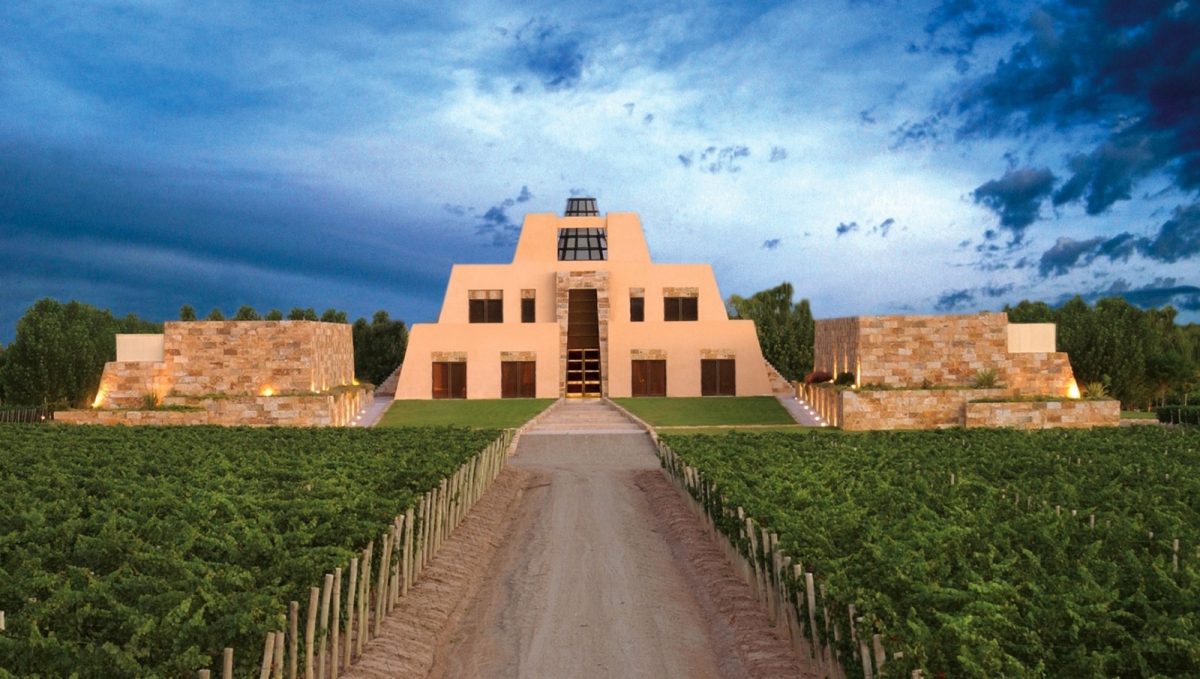
Photo credit: Bodega Catena Zapata
2) Susana Balbo
Argentina’s wine industry owes much to Susana Balbo, one of the country’s most prominent winemakers. Her tireless work promoting Malbec, the country’s signature grape, has earned her widespread acclaim, making her a household name in the wine world. She began her career at the Catena Zapata winery, gaining valuable experience working alongside some of Argentina’s most renowned winemakers.
In 1999, Balbo launched her own eponymous winery, Susana Balbo Wines, which quickly gained a reputation for producing high-quality wines. She was one of the first female winemakers in Argentina and has since become a role model for women in the industry.
Balbo has experimented with different techniques and terroirs to produce a range of Malbec wine. Balbo’s signature wines result from her meticulous attention to detail and deep terroir knowledge. Her flagship wine, the Susana Balbo Signature Malbec, is a complex and elegant wine that reflects the unique characteristics of the Mendoza region.
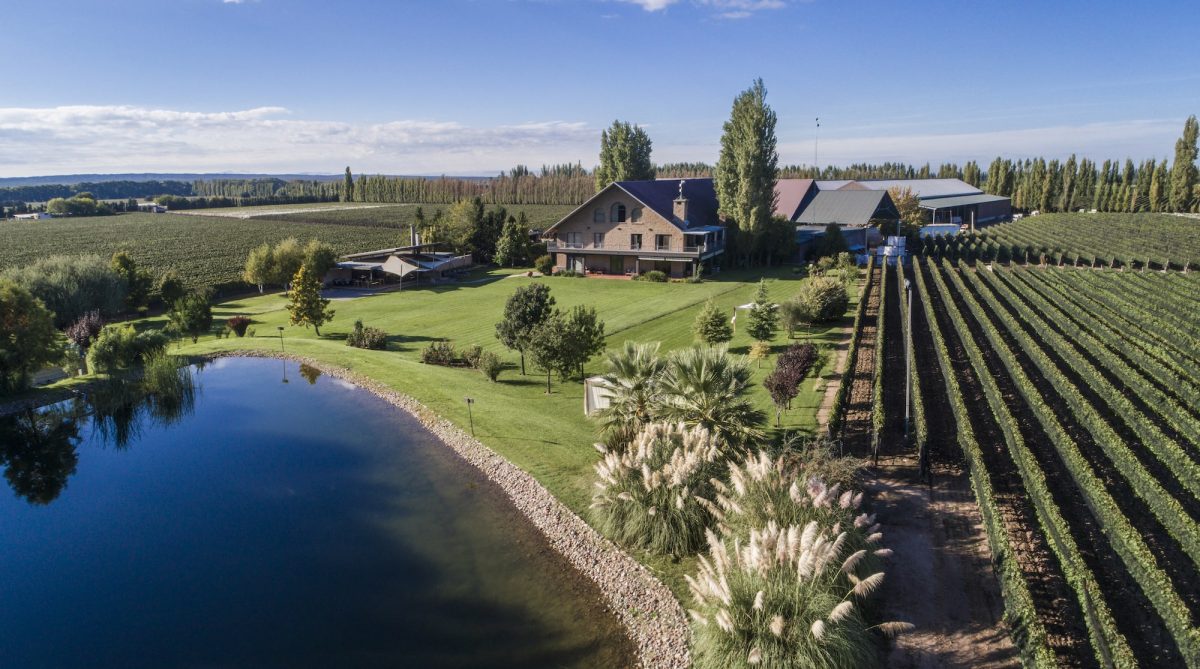
Photo credit: Susana Balbo Winery
3) Familia Zuccardi
The Zuccardi family is a three-generation-old dynasty that has made its mark in the wine industry of Argentina. Since its establishment in 1963 by Alberto Zuccardi, the family has become one of the most prominent wine families in the country, now focused on producing fine wines in the Uco Valley. Today, the family is dedicated to creating precise, terroir-driven wines with a diverse portfolio ranging from Malbec to Semillon.
The Zuccardi winery in the Uco Valley of Mendoza is a glowing symbol of the family’s growth and development. The striking winery has been designed to house no less than 200 concrete amphoras, where separate vinifications for single blocks of vines occur. This allows the family to maintain the purity and distinctiveness of each wine produced, reflecting the unique character of the Uco Valley.
Today, the Zuccardi brand is in the capable hands of Sebastian Zuccardi, the grandson of Alberto Zuccardi and one of the most forward-thinking winemakers in Argentina. His philosophy revolves around keeping a precise expression of terroir, reflected in the austere, focused, and precise wines the family produces. Whether from San Pablo, Gualtallary, or the Paraje Altamira vineyard surrounding the winery, each wine reflects the unique character of the Uco Valley.
The home estate of the Zuccardi family is called Piedra Infinita, named after the infinite stones (piedras) found there. It is also the name of their popular restaurant that overlooks the vineyards. Here, visitors can sample the family’s exquisite wines while enjoying the stunning views of the Uco Valley.
With a dedication to precision, terroir expression, and innovation, the Zuccardi family is poised to continue its legacy as one of Argentina’s most prominent wine families.
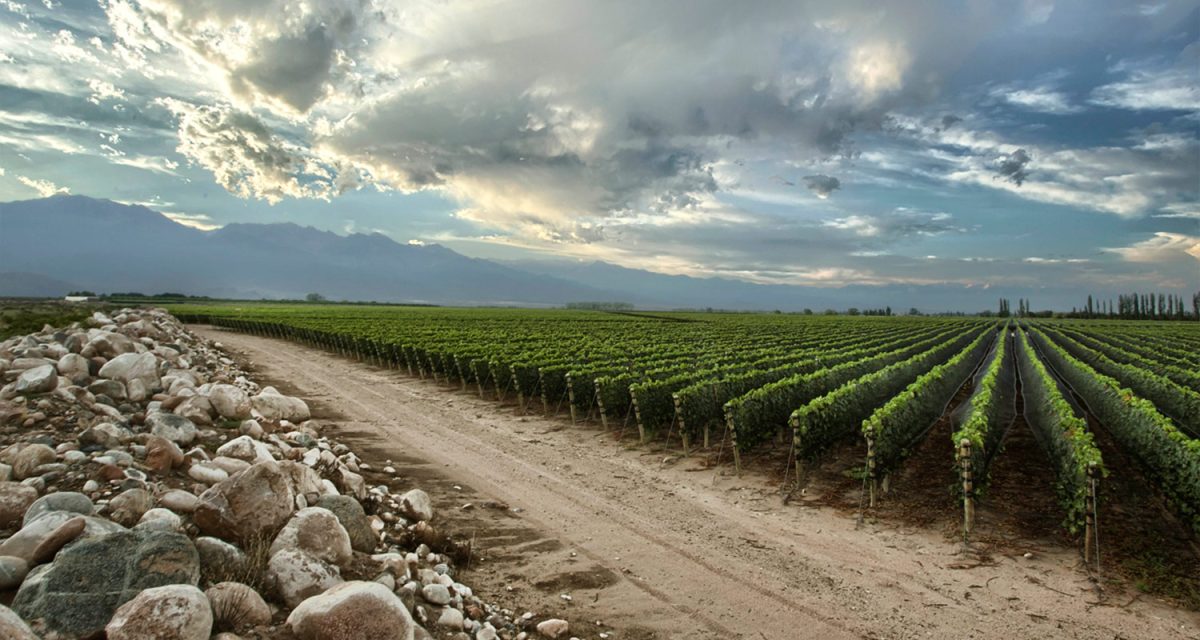
Photo credit: Familia Zuccardi
Did you know?
Every year on April 17th, Argentina comes alive with festivities as it celebrates the Malbec World Day, a significant event dedicated to the country’s most popular grape variety. The celebration extends throughout the nation, with Mendoza, the epicenter of Argentina’s wine country, hosting some of the most notable events.
The day is a vibrant occasion that showcases the country’s wine culture and its association with the Malbec grape, which has become a symbol of Argentine identity. With numerous events taking place across the country, the Malbec World Day is an exciting time for wine enthusiasts and revelers alike to indulge in the rich flavors of Argentina’s famous wine.
Torrontés
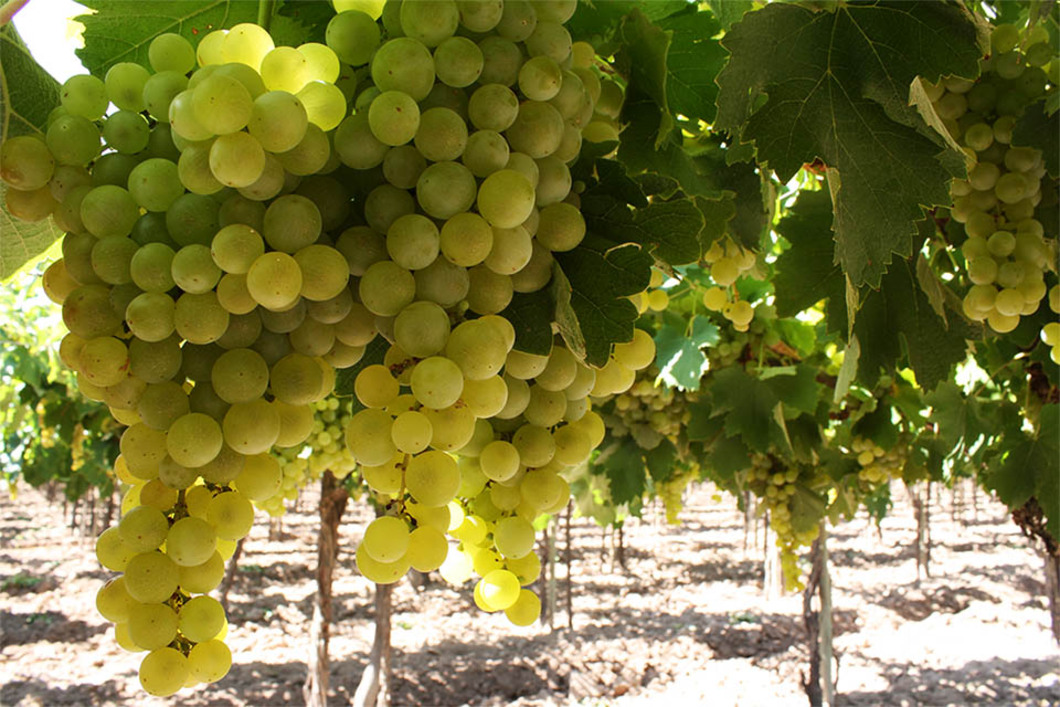
Photo credit: San Nicolas Torrontes Riojano
Regarding wine production in Argentina, one cannot overlook the popularity of Torrontés. This aromatic white wine is considered Argentina’s speciality and is produced using three different varieties that are all descendants of the Muscat of Alexandria grape.
Its popularity has also led to an increase in plantings of the grape throughout the country, making it one of the most widely grown white wine grapes in Argentina.
What is Torrontés wine?
The Argentine-origin white wine known for its floral aroma and fruity taste is made from the unique Torrontés grapes. It’s worth noting that Torrontés is a group of three distinct varieties:
- Torrontés Riojano,
- Torrontés Sanjuanino, and
- Torrontés Mendocino.
These varieties are all native to South America and result from a natural cross between the mission grape and the sweet Muscat of Alexandria grape. Among the three, the Torrontés Riojano grape is the most popular and most delicious, as it grows dominantly in the northern region of Salta in Argentina.
Where does Torrontés come from?
In various countries such as Argentina, Spain, and Portugal, the name Torrontés is applied to several distinct white grape varieties. Among these, the Torrontés Riojano variation is the most popular and is commonly referred to as simply Torrontés.
Although Torrontés Riojano is Argentina’s most widely planted variety, two other grapes share the same name: Torrontés Sanjuanino and Torrontés Mendocino.
While Torrontés Riojano remains the most widely planted variety of Torrontés in Argentina, wine lovers should be aware of the existence of Torrontés Sanjuanino and Torrontés Mendocino, both of which offer their own unique characteristics and flavor profiles.
What does Torrontés taste like?
The Torrontés grape is a distinctive and flavorful variety that produces a refreshing white wine. Its unique aromatic profile, crisp acidity, and refreshing finish make it an ideal wine to enjoy on a warm summer day. The best examples come from high-altitude vineyards in Salta, Argentina, where the grape thrives in cooler temperatures and intense sunlight. If you’re looking for a new and exciting white wine, Torrontés is definitely worth trying.
What food to pair with Torrontés?
Torrontés is a versatile wine that pairs exceptionally well to a wide range of dishes from Indian or Asian cuisine. When choosing food to pair with this wine, it is best to opt for lighter-colored meats such as poultry, fish, and tofu. These foods won’t overpower the wine’s flavor, aroma, and acidity, making for a well-balanced meal.
What are notable producers of Torrontés wines?
1) El Enemigo
El Enemigo is the brainchild of two Argentinian friends, Alejandro Vigil, a soil expert and celebrated winemaker, and Adrianna Catena, a historian, and Catena Zapata owner. The idea for this passion project was born during a visit to London in 2009 while attending a party in honor of Adrianna’s father, Nicolás Catena, the owner of Bodega Catena Zapata.
The aim was to create a wine that would respect traditions while simultaneously challenging the status quo. With a cult following, El Enemigo has become synonymous with quality and innovation in winemaking.
Gran Enemigo Torrontés is a wine originating in Tupungato, the celebrated vineyard in Gualtallary. The seven-year-old pergola used to make this wine is grown at an altitude of 1,600 in well-draining, calcareous, and rocky soil.
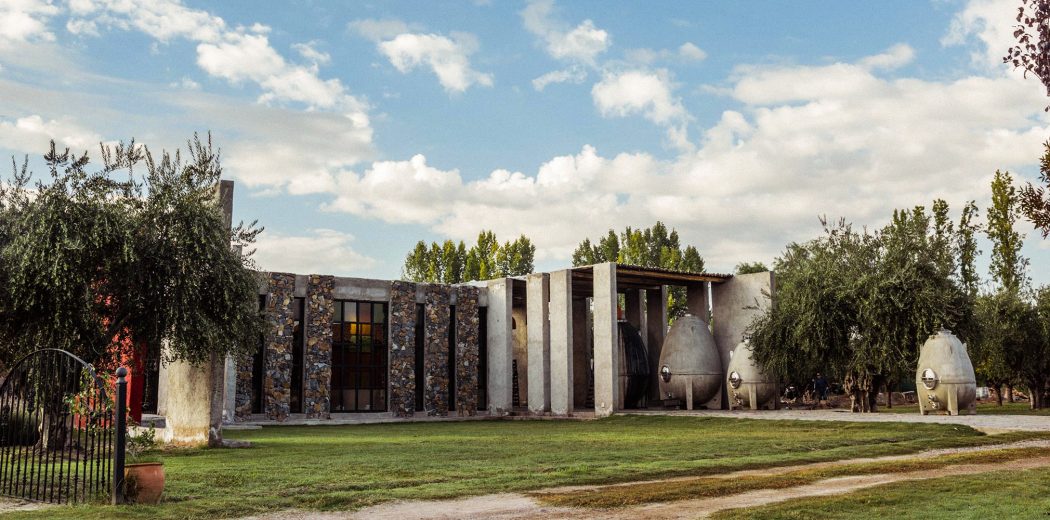
Photo credit: El Enemigo winery
2) Bodega Colomé
Altitude is more than just height; it is energy, according to Bodega Colomé, one of the highest vineyards in the world. Situated in the breathtaking Calchaquí Valley in northwest Argentina, this mountain wine estate produces unique wines to match its unique experiences.
The oldest working winery in Argentina, Bodega Colomé was established in 1831 but owes its modern incarnation to Swiss businessman Donald Hess, who purchased it in 2001. He became enamored with the prospect of producing top-quality wines in this challenging environment, a mission he has handed down to his stepdaughter Larissa and her husband Christoph.
Crafting wine at high altitudes is an impressive achievement. The intense sunlight necessitates thick grape skins, while the cool climate lengthens the maturation period, producing wines with potent flavors and acidity if managed properly. The ‘Altura Máxima’ series is made from the highest vineyards, located 3,111 meters above sea level, and feature grape varieties such as Pinot Noir, Sauvignon Blanc, and Malbec, while other locations produce Argentine varietals like Torrentés and Bonarda.
Given the breathtaking nature of this part of the world, it is easy to understand why the estate is dedicated to biodynamic farming and minimal intervention in the winery.
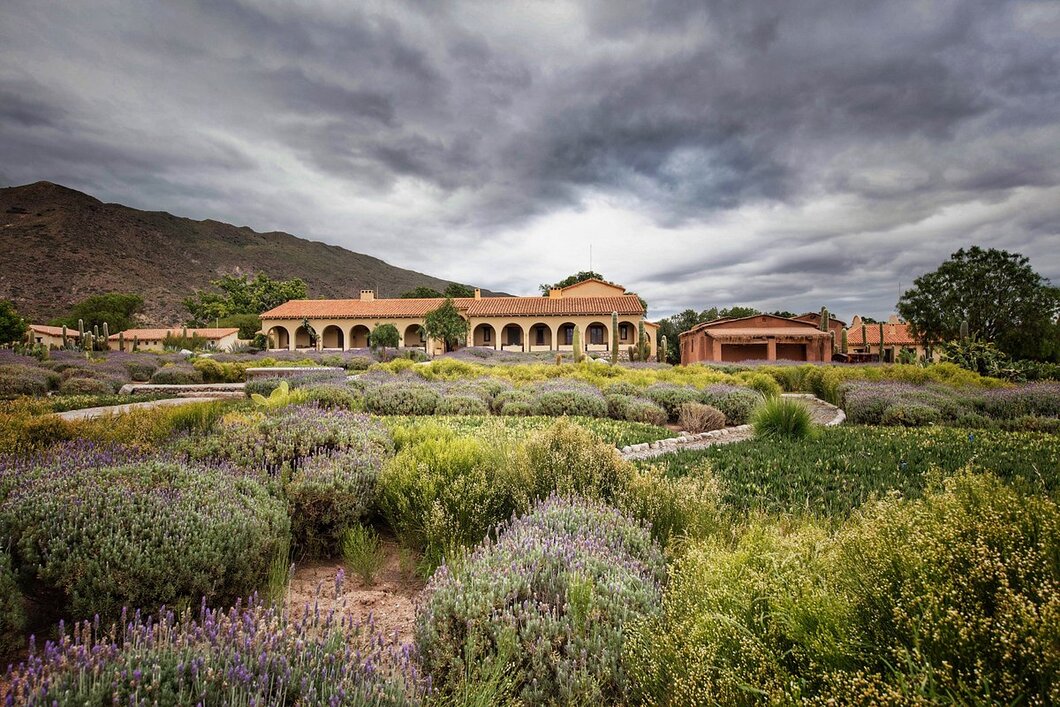
Photo credit: Bodega Colomé
3) Susana Balbo Winery
As previously mentioned, Susana Balbo Winery was established in 1999 by the visionary and groundbreaking winemaker Susana Balbo. Susana Balbo, known as the “Queen of Torrontés,” was the first female winemaker in Argentina and has spent her career championing her country’s wines on the global stage.
The winery’s philosophy is centered around crafting wines that showcase the unique terroir of Mendoza and the Agrelo region, using sustainable and environmentally friendly practices. The Susana Balbo wine range is diverse, offering high-quality Malbec, Cabernet Sauvignon, and Torrontés, as well as white and red blends and rosé. The Torrontés grape, native to Argentina, is a signature variety of the winery and is celebrated for its floral aromatics and crisp acidity.
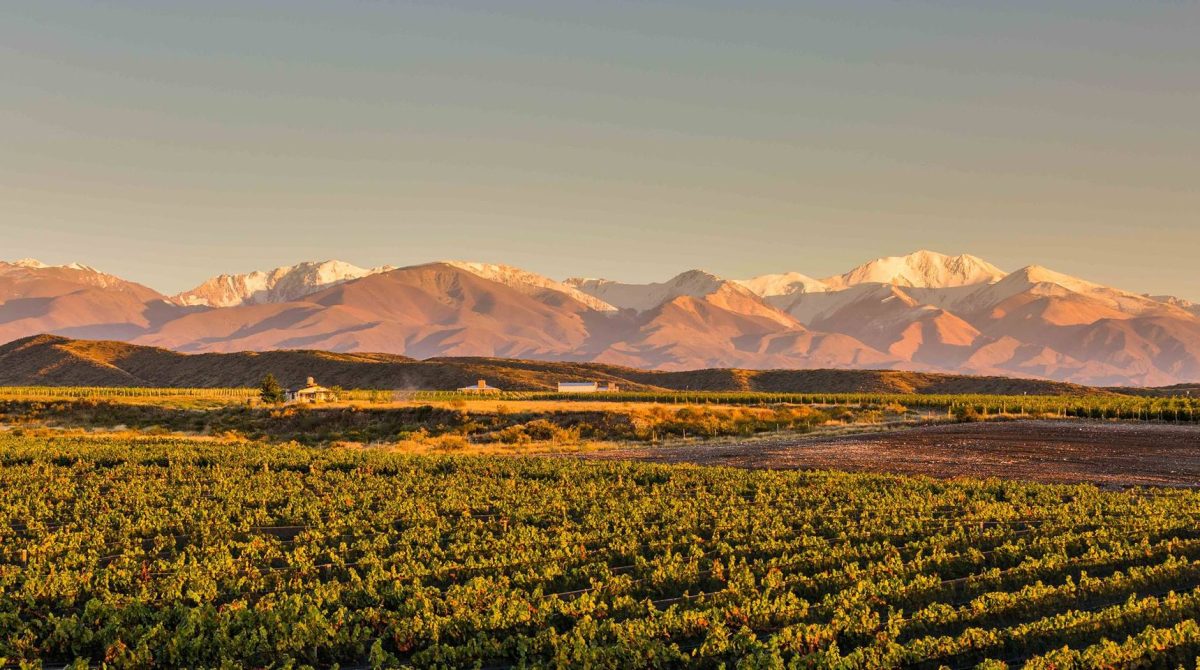
Photo credit: Susana Balbo Winery
Expert Perspectives
According to wine expert, Robert Parker,
“Argentina is producing some of the best wines in the world today, and Malbec is one of their most impressive wines. The quality of the grapes, the skill of the winemakers, and the unique terroir of the region make for wines with great depth, complexity, and age-worthiness.”
Wine tourism in Argentina
Over the past few decades, the Argentine wine industry has experienced a surge in wine tourism. From connoisseurs to casual drinkers, wine enthusiasts from all corners of the world are drawn to Argentina’s wine regions to explore and taste the country’s wines. This influx of tourists has been a significant boon to the wine industry in Argentina, contributing to its growth and development.
One of Argentina’s most prominent wine regions is Mendoza, situated at the base of the Andes Mountains. Mendoza is home to numerous wineries offering guided vineyards tours, wine-tasting sessions, and accommodation. Visitors can learn about the history and culture of the wineries, the grape varieties grown in the region, and the wine-making process from the vine to the bottle.
Apart from Mendoza, other wine regions in Argentina have made a name for themselves in the wine industry. Salta, San Juan, La Rioja, and Neuquen wine regions also attract wine tourists worldwide. These regions boast of their unique grape varieties and wine-making techniques, adding to the diversity of Argentine wines.
Besides the wine, wine tourists in Argentina can also enjoy the natural beauty and hospitality of the locals. Argentina’s wine regions offer breathtaking landscapes, ranging from snow-capped mountains to lush vineyards.
Wine tourism in Argentina has become an essential part of the wine industry, with wineries relying on it to expand their markets and enhance their brand image. Wine tourism has also led to the growth of related industries such as restaurants, hotels, and transportation, further boosting the economy.
Conclusion
Argentina’s wine industry has come a long way over the past few decades thanks to its dedication to quality and excellence. The country’s unique terroir, combined with its winemakers’ skill, has produced truly exceptional wines. From the deep, rich Malbec to the floral and fruity Torrontés, Argentina’s wines will leave a lasting impression on anyone who tries them.
One of the reasons for Argentina’s success is its unique terroir. The country is home to diverse climates and soils, from the high-altitude vineyards of the Andes Mountains to the sun-soaked plains of Mendoza. These different environments allow winemakers to produce a wide range of styles and varieties, each with its own unique flavor profile.
But it is not just the terroir that makes Argentina’s wines so special. The country’s winemakers have also worked hard to improve their craft, investing in new technology and techniques to produce wines of even greater quality. Many producers have adopted sustainable and organic farming practices, which benefit the environment and result in healthier, more flavorful grapes.
If you haven’t tried Argentinean wines yet, you are missing out on some of the world’s most exciting and delicious wines. Whether you are a fan of bold and spicy reds or crisp and refreshing whites, there will surely be a wine from Argentina that will delight your palate. So why not take a trip to your local wine shop and discover the magic of Argentinean wine for yourself?

